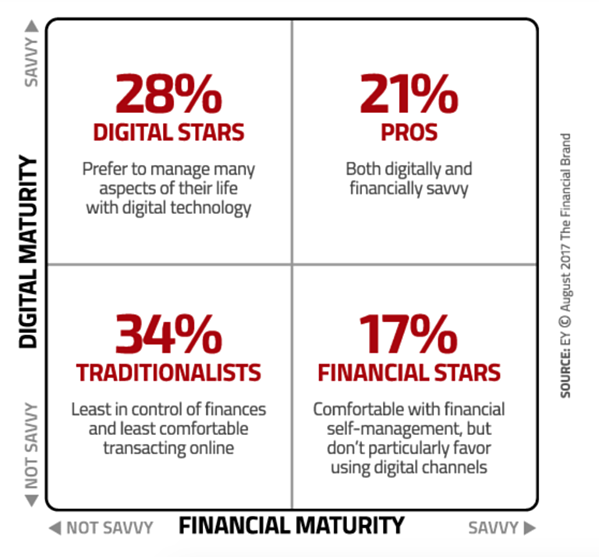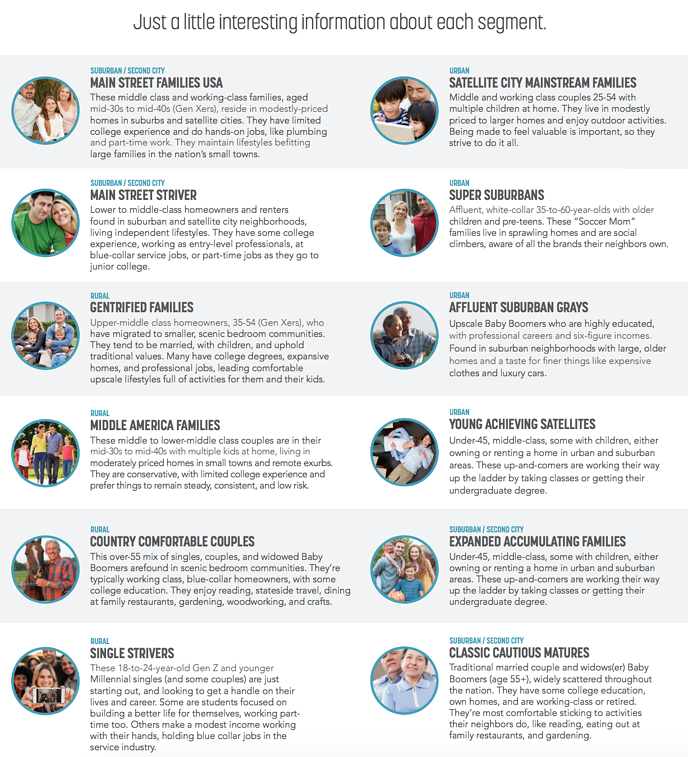Imagine being in a biker bar and trying to play a Justin Bieber song on the jukebox — the scene wouldn’t be pretty. When it comes to a marketing strategy, no one wants to be the Justin Bieber in a room full of bikers. Or the biker in a room full of Beliebers. Good marketing is all about reading the room and adapting your message accordingly. And in order to do that, you first have to know who is in the room. That’s where a segmented audience comes in.
What is customer segmentation?
Most businesses have a wide prospective customer base. But the individuals within that base can vary drastically by age, income, values, lifestyle, and more. Customer segmentation is the process of dividing a customer base into specific groups based on shared traits.
When discussing financial institutions, Ernst & Young, a company that conducts research for businesses across the globe, says, “A more granular understanding of consumers is no longer a ‘nice-to-have’ item, but a strategic and competitive imperative for banking providers. Customer understanding should be a living, breathing part of everyday business, with insights underpinning the full range of banking operations.”
Why is it so important?
Knowing your audience and understanding their specific needs is crucial to creating targeted marketing and delivering the right message, the right product, and the right service. When it comes to marketing your product, articulating benefits sought by your targeted group and delivering them on a channel where they will be most likely to see them is a sure-fire way to boost the success of your messaging efforts.
Segmenting customers can also play a key role in creating a differentiated product or point of service. Small businesses can often benefit even more from using segmentation models in this way because of their first-hand knowledge of their customers and ability to serve niche markets. Chris McKnight, the Chief Operating Officer of Whidbey Telecom, a rural telecommunications company, told Forbes, “Since 80% of [our] residents are over the age of 60 and fall into the late-adopter category, we play an extraordinary role in educating and helping our customers adopt and adapt to today’s rapidly changing technology environment.”
Crafting A Segmentation Strategy
Step one: define criteria
The first step to creating customer segmentation models is to define your criteria. Are you interested in income level? Age? Location? Lifestyle? Each of these traits falls into categories important to include in your customer segmentation model.
When creating customer segmentation models for financial institutions, Ernst & Young researched consumers’ financial knowledge and digital prowess. According to the Financial Brand, “Financial institutions can then overlay these new segments with more traditional segmentation to better understand consumer attitudes.”

Step two: gather customer data
Smart segments are data-driven. Your criteria should guide the way in which you collect data. Some may be gleaned from applications or email sign-ups, some may be paid for, and some may be gathered through good, old-fashioned interviews or surveys.
McKnight says, “Market segmentation and personas are incredibly important to our customer-centric approach...We start at a high level with published lifestyle segmentation data that match our households and then it becomes more proprietary as we supplement the data set with information from focus groups, surveys, and user data.”
Step three: determine buyer personas
Once you have your data, you should start to notice patterns to create specific groups or buyer personas. These groups should be large enough that they can become valuable segments to your business, but niche enough that you can tailor messaging towards their specific needs. For community financial institutions, Kasasa has identified 12 examples of buyer personas based on location, age, and economic status. Check them out below.

Step four: target your message
Now that you know your audience, you can choose who you want to target, how to position your product, and through which channels you should deliver your message in order to attract consumers.
Identifying open gaps in the market and comparing those to your consumer base can help you determine a successful positioning strategy. In a sea of big-tech giants, Whidbey Telecom has become a source of support for its elderly customers. “We maintain a 24x7 tech support team, and we extend our support to topics that other companies do not[,] like how to use your email, how to download an app on your iPhone, or how to connect your computer to WiFi.”
Knowing your audience not only helps with customer acquisition but customer retention as well. Your current customers can provide a wealth of knowledge for which messaging or products are working — and which aren’t.
Finding a partner who can help
For community financial institutions with resources already spread thin, the thought of collecting and analyzing piles of consumer data in order to create nuanced segmentation models can be daunting. It’s beneficial to find a partner who not only analyzes consumer metrics but then uses those metrics to execute a holistic marketing strategy. Through the use of a proprietary segmentation model that finds consumers who are three times more likely to open an account and a multi-channel, always-on marketing program, Kasasa clients have seen a 215% average ROI after running longer than three months.*
Honing in on your audience and tailoring messaging and products specifically to them can drastically improve your ROI — a win for consumers and your business. After all, it’s nearly impossible (and pretty pointless) to sell someone something they don’t need. Or get a biker to sing “One Less Lonely Girl.”
*Kasasa Analytics



